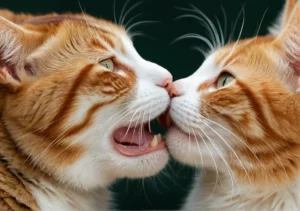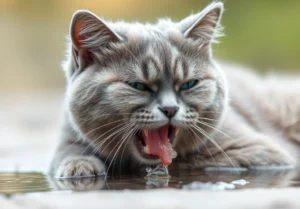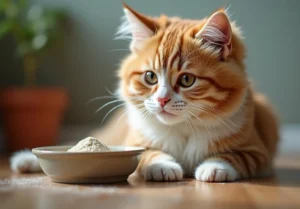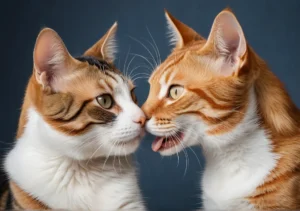Cats are known for their unique behaviors and characteristics, from their independent nature to their playful antics. One particular trait that often puzzles cat owners is the dry texture of their tongues. But why are cats’ tongues dry?
Cats’ tongues have a rough, sandpaper-like texture that feels dry to the touch. This is due to the tiny hook-like structures called papillae that cover their tongues. These papillae serve several important functions for cats, including grooming, eating, and drinking. Let’s explore the fascinating reasons behind why cats have dry tongues.
Evolutionary Adaptation:
Cats’ tongues are dry for a fascinating reason – it’s all about survival! Back in the day, cats’ ancestors roamed the hot deserts, where water was as scarce as a snowball in summer. So, their tongues evolved to be dry to help these master hunters conserve precious water in those harsh, arid environments. Imagine that – a simple trait that helped them thrive in some of the toughest places on Earth!
Efficient Grooming:
Here’s a paw-some fact – a cat’s tongue is like a built-in brush for all that luxurious fur! The rough texture of their tongue isn’t just for show; it’s actually super handy for grooming. This unique texture helps them remove dirt, debris, and even pesky loose hair from their coat with ease. So next time you see your feline friend hard at work grooming, just know their dry tongue is helping them stay clean and fabulous!
- Bonus Tip: Cats’ tongues are covered in tiny, hook-shaped structures called papillae, which help them clean themselves efficiently. So, next time your kitty gives herself a spa day, remember it’s all thanks to those amazing papillae!
Enhanced Taste Perception:
Did you know that a cat’s tongue is covered in small, rough papillae that contain taste buds? These specialized structures play a key role in helping cats detect different flavors in their food, allowing them to truly savor their meals. So, the next time your feline friend seems picky about their food, it might just be because of their enhanced taste perception thanks to their unique tongue structure.
Cooling Mechanism:
Have you ever wondered why a cat’s tongue feels so dry? Well, here’s an interesting tidbit for you: when a cat licks its fur, the saliva that evaporates off their tongue actually helps them cool down. Yes, you heard that right! So, that seemingly dry tongue of theirs isn’t just for grooming purposes but also serves as a clever thermoregulation tool. Next time you see your kitty indulging in a grooming session, just remember they’re not only keeping clean but also keeping cool in their own special way.
Water Conservation:
Cats’ dry tongues are more of a superpower than a quirk. They actually help cats conserve water. How? Well, picture this: with a dry tongue, cats can easily lap up water, forming a neat little liquid column that they can expertly draw up into their mouths. It’s like a built-in straw that helps them stay hydrated efficiently. So, that dry tongue is more than meets the eye – or should we say, the taste buds!
Communication Tool:
Aside from being crucial for grooming, a cat’s tongue is a multi-purpose tool, especially when it comes to communication. Cats are known for their mysterious ways, right? Well, their tongues play a part in that too! When cats lick and groom themselves, they leave a scent on their fur that acts like a personal calling card, marking their territory for other cats. Plus, when they interact with their kitty pals, grooming each other creates a strong social bond within the group. So, next time you see your cat indulging in a grooming session, know that it’s more than just self-care – it’s their way of talking to their buddies too!
Dental Health Benefits:
The rough texture of a cat’s tongue, featuring tiny, hook-like structures called papillae, serves as a natural toothbrush, aiding in the removal of plaque and maintaining good oral hygiene. This unique adaptation not only helps keep your feline friend’s teeth clean but also reduces the risk of dental issues such as gingivitis and periodontal disease. Regular grooming with a dry tongue not only keeps your cat looking sharp but also contributes to their overall dental health.
Unique Adaptations:
Cats’ tongues are marvels of evolution, showcasing their versatility and multifunctionality. In addition to grooming and dental health benefits, a cat’s dry tongue provides thermoregulation, helping them cool down in hot weather by dissipating heat through evaporation. The rough surface of a cat’s tongue also aids in efficient food intake, allowing them to grip and pull food into their mouths effectively. This adaptability highlights the fascinating nature of these beloved pets and their specialized traits that contribute to their well-being.
- Taste Perception: Cats’ tongues play a crucial role in their taste perception, as the papillae on their tongues contain taste buds that help them distinguish between flavors with precision. This unique feature allows cats to savor their food and seek out their favorite flavors, contributing to their enjoyment of mealtime.
By recognizing the various functions of a cat’s dry tongue, from grooming and dental health to taste perception and thermoregulation, we gain a deeper understanding of these remarkable creatures and the intricate ways in which their bodies are adapted to enhance their overall well-being.
Alex, a passionate animal lover, has experience in training and understanding animal behavior. As a proud pet parent to two dogs and three cats, he founded AnimalReport.net to share insights from animal experts and expand his knowledge of the animal kingdom.




